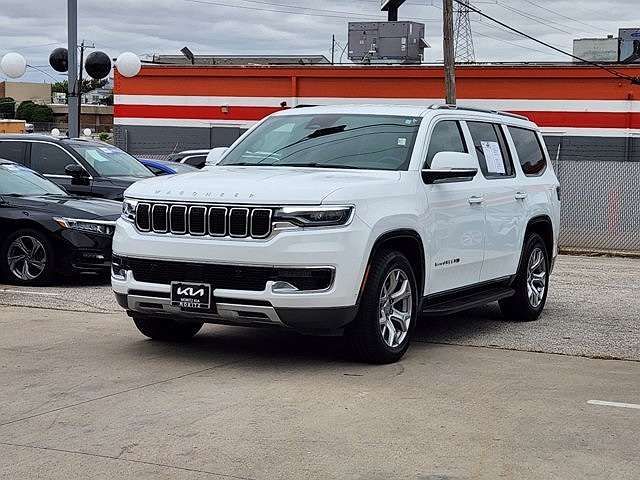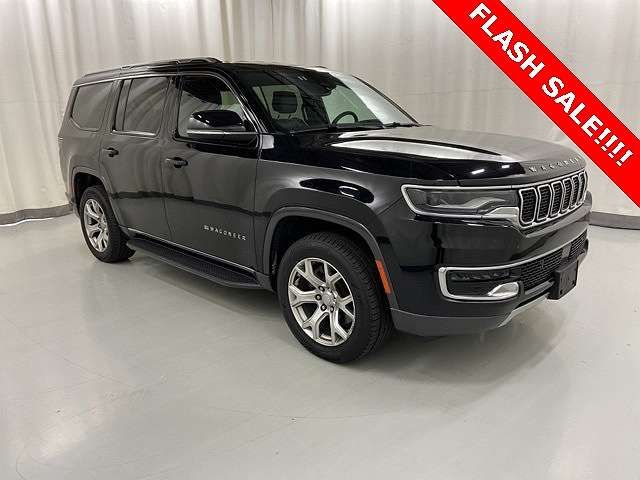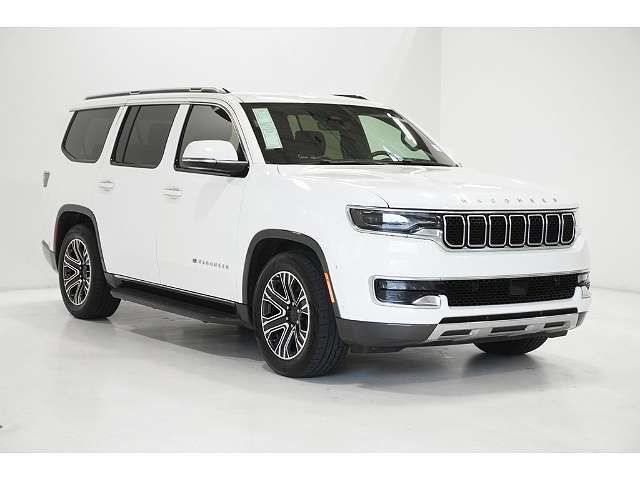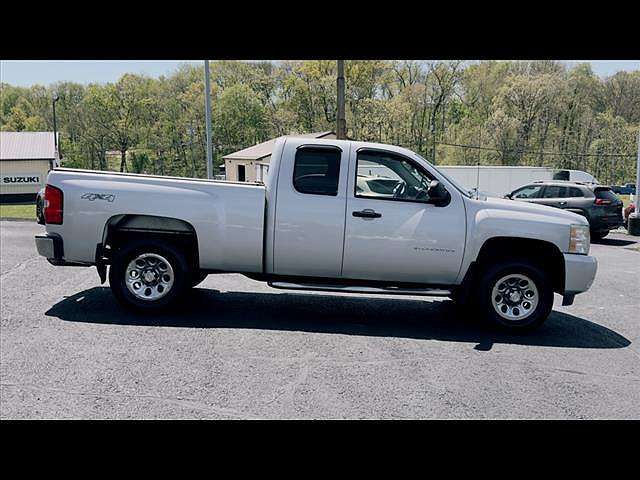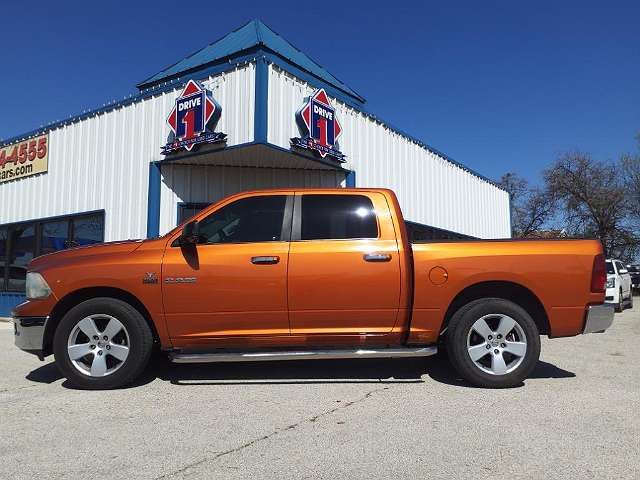
2023 JEEP WAGONEERVIN: 1C4SJVDPXPS513278

Historical Records
Vandalism damage reported
Damage to front
REBUILT TITLE ISSUED
Vehicle declared a total loss by an insurance company
Collision damage reported
 Window Sticker
Window Sticker
- Manufacturer's Suggested Retail Price (MSRP)
- Engine and Transmission Specifications
- Equipment, Packages, and Extra Features
- Fuel Economy Rating
- Other Information

| Year | 2023 |
| ODO | 9501 mi |
| Condition | Hidden text |
| Seller | Hidden text |
| Location | Manitowoc, WI, 54220 |
| Date | appeared 12 days ago latest price $6089 |
| Sale Website Type | classifieds |
| Notes | |
| Hidden text | |



| Body Style | SUV |
| Color | Gray |
| Color (Interior) | Black |
| Transmission | Automatic |
| Engine | 3.0 L |
| Cylinders | 6 Cyl |
| Drive | 4WD |
| Fuel Type | Gasoline |
- Air Suspension
- Hidden text
- Heated Seats
- Hidden text
- Leather Seats
- Hidden text
- Preferred Equipment Package
- Hidden text
- Remote Start
- Hidden text
- 10 Speakers
- 8019
- 22 Inch Wheels
- 3447
- 4-Wheel Disc Brakes
- 6135
- 7-Passenger Seating
- Hidden text
- Adaptive Cruise Control
- Hidden text
- Adjustable Pedals
- Hidden text
- Air Conditioning
- Hidden text
- Anti-Lock Brakes
- Hidden text
- Apple Carplay
- Hidden text
- Auto Climate Control
- Hidden text
- Auto-Dimming Mirror
- Hidden text
- Blind Spot Monitor
- Hidden text
- Braking Assist
- Hidden text
- Cargo Cover
- Hidden text
- Collision Warning System
- Hidden text
- Cooled Seats
- Hidden text
- Cup Holder
- Hidden text
- Door Bin
- Hidden text
- Dual-Zone Climate Control
- Hidden text
- Floor Mats
- Hidden text
- Front Airbags (Passenger)
- Hidden text
- Front Bucket Seats
- Hidden text
- Front Knee Airbags (Driver)
- Hidden text
- Front Side Airbags (Driver)
- Hidden text
- Handsfree/Bluetooth Integration
- Hidden text
- Head-Up Display
- Hidden text
- Heated Steering Wheel
- Hidden text
- Illuminated Entry
- Hidden text
- Leather Trimmed Seats
- Hidden text
- Overhead Console
- Hidden text
- Passenger Seat Mounted Armrest
- Hidden text
- Passive Keyless Entry
- Hidden text
- Power Adjustable Headrest
- Hidden text
- Power Mirrors
- Hidden text
- Power Seat (Dual)
- Hidden text
- Power Sun/Moonroof
- Hidden text
- Radio Data System
- Hidden text
- Reading Lights
- Hidden text
- Rear Anti-Roll Bar
- Hidden text
- Rear Center Armrest
- Hidden text
- Rear Parking Sensors
- Hidden text
- Rear Window Wiper
- Hidden text
- Remote Keyless Entry
- Hidden text
- Roof Rails
- Hidden text
- Seat Memory
- Hidden text
- Speed-Sensing Steering
- Hidden text
- Stability Control
- Hidden text
- Steering Wheel Memory
- Hidden text
- Telematics System
- Hidden text
- Tire Pressure Monitoring System
- Hidden text
- Trip Computer
- Hidden text
- Uconnect System
- Hidden text
- Ventilated Seats
- Hidden text
- Wood Dash Trim
- Hidden text
| Year | 2023 |
| ODO | 7254 mi |
| Seller | Hidden text (Hidden text) |
| Location | Manitowoc, WI, 54220 |
| Date | appeared 22 days ago latest price $8469 |
| Price History | |
| Sale Website Type | classifieds |



| Color | Baltic Gray Metallic Clearcoat Exterior |
| Transmission | 8-Speed Automatic Transmission |
| Drive | 4 wheel drive |
Sale Record
| Year | 2023 |
| ODO | 5081 mi |
| Seller | Hidden text |
| Location | Hatfield, PA, 19440 |
| Date | ended 3 months ago |
| Sale Website Type | dealer auction |



| Body Style | SUV |
| Color | Gray |
| Color (Interior) | Black |
| Transmission | Automatic |
| Engine | 6 Cylinder Turbo |
| Drive | AWD |
| Fuel Type | Gasoline |
- 12-Way Power Passenger Seat -inc: Power Recline, Height Adjustment, Fore/Aft Movement, Cushion Tilt and Power 4-Way Lumbar Support
- 5966
- 50 State Emissions
- Hidden text
- Air Filtration
- Hidden text
- Back-Up Camera
- Hidden text
- Brake Assist
- Hidden text
- Collision Mitigation-Front
- Hidden text
- Day-Night Auto-Dimming Rearview Mirror
- Hidden text
- Driver And Passenger Knee Airbag
- Hidden text
- Electronic Stability Control (ESC) And Roll Stability Control (RSC)
- Hidden text
- Front And Rear Map Lights
- Hidden text
- Full-Size Spare Tire Mounted Inside Under Cargo
- Hidden text
- Heated Front Seat(s)
- Hidden text
- Interior Trim -inc: Genuine Wood Instrument Panel Insert, Genuine Wood Door Panel Insert, Genuine Wood Console Insert and Chrome/Metal-Look Interior Accents
- Hidden text
- Lane Keeping Assist
- Hidden text
- 12-Way Power Driver Seat -inc: Power Recline, Height Adjustment, Fore/Aft Movement, Cushion Tilt and Power 4-Way Lumbar Support
- 2946
- 4-Wheel Disc Brakes w/4-Wheel ABS, Front Vented Discs, Brake Assist, Hill Descent Control, Hill Hold Control and Electric Parking Brake
- Hidden text
- Adjustable Pedals
- Hidden text
- Automatic SOS Call Emergency Sos
- Hidden text
- Body-Colored Front Bumper w/Chrome Rub Strip/Fascia Accent and Chrome Bumper Insert
- Hidden text
- Clearcoat Paint
- Hidden text
- Cruise Control w/Steering Wheel Controls
- Hidden text
- Driver And Front Passenger Armrests Front Center Armrest w/Storage and Rear Center Armrest
- Hidden text
- Dual Stainless Steel Exhaust
- Hidden text
- Four Wheel Drive
- Hidden text
- Full Cloth Headliner
- Hidden text
- Hands-Free Liftgate
- Hidden text
- Integrated Roof Antenna
- Hidden text
- Laminated Glass
- Hidden text
- Multi-Zone A/C
- Hidden text
- Perimeter Alarm
- Hidden text
- Power Liftgate
- 6532
- 2 LCD Monitors In The Front
- 2059
- 700CCA Maintenance-Free Battery w/Run Down Protection
- Hidden text
- Airbag Occupancy Sensor
- Hidden text
- Back-Up Camera w/Washer
- Hidden text
- Cargo Area Concealed Storage
- Hidden text
- Collision Mitigation-Rear
- Hidden text
- Daytime Running Lights
- Hidden text
- Driver And Passenger Visor Vanity Mirrors w/Driver And Passenger Illumination
- Hidden text
- Electronic Transfer Case
- Hidden text
- Front And Rear Parking Sensors
- Hidden text
- GVWR: 7,650 lbs
- Hidden text
- Heated Leatherette Steering Wheel
- Hidden text
- Intermittent Wipers
- Hidden text
- Leather Door Trim Insert
- Hidden text
- Outboard Front Lap And Shoulder Safety Belts -inc: Height Adjusters and Pretensioners
- Hidden text
- Power 1st Row Windows w/Front And Rear 1-Touch Down, w/Driver And Passenger 1-Touch Up
- Hidden text
- Power Passenger Seat
- Hidden text
- 10 Alpine Speakers
- 6553
- 4G LTE Wi-Fi Hot Spot Mobile Hotspot Internet Access
- Hidden text
- Adjustable Steering Wheel
- Hidden text
- Auxiliary Audio Input
- Hidden text
- Body-Colored Rear Step Bumper w/Chrome Rub Strip/Fascia Accent
- Hidden text
- Climate Control
- Hidden text
- Curtain 1st, 2nd And 3rd Row Airbags
- Hidden text
- Driver And Passenger Heated-Cushion, Driver And Passenger Heated-Seatback and Ventilated Front Seats
- Hidden text
- Electric Power-Assist Speed-Sensing Steering
- Hidden text
- Front And Rear Anti-Roll Bars
- Hidden text
- Full Floor Console w/Covered Storage, Mini Overhead Console w/Storage, Conversation Mirror, 3 12V DC Power Outlets and 1 120V AC Power Outlet
- Hidden text
- Headlights-Automatic Highbeams
- Hidden text
- Integrated Turn Signal Mirrors
- Hidden text
- Lane Departure Warning
- Hidden text
- Navigation System
- Hidden text
- Perimeter/Approach Lights
- Hidden text
- Power Liftgate Rear Cargo Access
- Hidden text
- Radio: Uconnect 5 Nav w/10.1" Display
- Hidden text
- Rear Parking Aid
- Hidden text
- Seat Memory
- Hidden text
- 1490# Maximum Payload
- 7239
- 4-Wheel Disc Brakes
- Hidden text
- Adaptive Cruise Control
- Hidden text
- Automatic Highbeams
- Hidden text
- Body-Colored Door Handles
- Hidden text
- Class IV Towing Equipment -inc: Hitch and Trailer Sway Control
- Hidden text
- Cruise Control
- Hidden text
- Driver Air Bag
- Hidden text
- Dual Stage Driver And Passenger Seat-Mounted Side Airbags
- Hidden text
- Fog Lamps
- Hidden text
- Full Carpet Floor Covering -inc: Carpet Front And Rear Floor Mats
- Hidden text
- HVAC -inc: Underseat Ducts, Headliner/Pillar Ducts and Console Ducts
- Hidden text
- Instrument Panel Covered Bin, Driver / Passenger And Rear Door Bins
- Hidden text
- LED Headlights
- Hidden text
- Multi-Link Rear Suspension w/Coil Springs
- Hidden text
- Passenger Vanity Mirror
- Hidden text
- Power Fuel Flap Locking Type
- Hidden text
- Proximity Key For Doors And Push Button Start
- Hidden text
- Rear HVAC w/Separate Controls
- Hidden text
- Roof Rack Rails Only
- Hidden text
- Smart Device Integration
- Hidden text
- Tire Specific Low Tire Pressure Warning
- Hidden text
- WiFi Hotspot
- Hidden text
- Passenger Air Bag Sensor
- Hidden text
- Power Door Locks w/Autolock Feature
- Hidden text
- Power Windows
- Hidden text
- Rear Cupholder
- Hidden text
- Remote Trunk Release
- Hidden text
- Side Steps
- Hidden text
- Telematics
- Hidden text
- Variable Speed Intermittent Wipers
- Hidden text
- Radio w/Seek-Scan, Clock, Speed Compensated Volume Control, Aux Audio Input Jack, Steering Wheel Controls, Voice Activation, Radio Data System and External Memory Control
- Hidden text
- Rear Head Air Bag
- Hidden text
- Satellite Radio
- Hidden text
- Smart Device Remote Engine Start
- Hidden text
- Tow Hitch
- Hidden text
- Woodgrain Interior Trim
- Hidden text
- Rear Defrost
- Hidden text
- Requires Subscription
- Hidden text
- Siriusxm Traffic Plus Real-Time Traffic Display
- Hidden text
- Tire Pressure Monitor
- Hidden text
- Voice Activated Dual Zone Front And Rear Automatic Air Conditioning W/Front Infrared
- Hidden text
- Tailgate/Rear Door Lock Included w/Power Door Locks
- Hidden text
- Valet Function
Model Analytics & Market Report
Depreciation
| Year | Average Mileage | Average Price | % Left | % Lost | ||
|---|---|---|---|---|---|---|
| 2023 MSRP | 0 mi | $81,823 | — | — | 100% | 0% |
| 2023 | 10,266 mi | $71,500 | +$10,323 | +12.62% | 87.38% | 12.62% |
| 2024 | 20,532 mi | $65,997 | +$5,503 | +7.7% | 80.66% | 19.34% |
| 2025 | 30,798 mi | $53,876 | +$12,121 | +18.37% | 65.84% | 34.16% |
| → Visit 2023 JEEP WAGONEER depreciation page to see full data. | ||||||
Price vs Mileage
| Mileage | Average Price | Sample Size |
|---|---|---|
| 0 mi | $73,990 | 61 sales |
| 5,000 mi | $69,881 | 89 sales |
| 10,000 mi | $66,235 | 119 sales |
| 15,000 mi | $65,951 | 110 sales |
| 20,000 mi | $62,872 | 70 sales |
| 25,000 mi | $63,418 | 28 sales |
| → Visit 2023 JEEP WAGONEER depreciation page to see full data. | ||
VIN Decoder — 51 records
Anti-lock Braking System (ABS) means a portion of a service brake system that automatically controls the degree of rotational wheel slip during braking by: (1) Sensing the rate of angular rotation of the wheels; (2) Transmitting signals regarding the rate of wheel angular rotation to one or more controlling devices that interpret those signals and generate responsive controlling output signals; and (3) Transmitting those controlling signals to one or more modulator devices that adjust brake actuating forces in response to those signals.
ESC is a computerized technology that improves a vehicle's stability by detecting and reducing loss of traction (skidding). When ESC detects loss of steering control, it automatically applies the brakes to help steer the vehicle in the driver's intended direction. Braking is automatically applied to wheels individually, such as the outer front wheel to counter oversteer, or the inner rear wheel to counter understeer. Some ESC systems also reduce engine power until control is regained.
An EDR is a device installed in motor vehicles to record technical vehicle and occupant information for a brief period before, during, and after a triggering event, typically a crash or near-crash event. Sometimes referred to as "black-box" data, these data or event records can be valuable when analyzing and reconstructing crashes.
A keyless ignition system permits starting a car without a physical key being inserted into an ignition. Instead, a small device known as a "key fob" transmits a code to a computer in the vehicle when the fob is within a certain close range. When the coded signal matches the code embedded in the vehicle's computer, a number of systems within the car are activated, including the starter system. This allows the car to be started by simply pressing a button on the dashboard while the key fob is left in a pocket or a purse. The vehicle is usually shut down by pushing the same button.
A TPMS is an electronic system designed to monitor the air pressure inside the pneumatic tires on various types of vehicles. TPMS can be divided into two different types - direct and indirect. Direct TPMS employ pressure sensors on each wheel, either internal or external. The sensors physically measure the tire pressure in each tire and report it to the vehicle's instrument cluster or a corresponding monitor. Indirect TPMS does not use physical pressure sensors but measure air pressures by monitoring individual wheel rotational speeds and other signals available outside of the tire itself.
When the traction control computer detects a driven wheel or wheels spinning significantly faster than another, it invokes an electronic control unit to apply brake friction to wheels spinning due to loss of traction. This braking action on slipping wheels will cause power transfer to the wheels with traction due to the mechanical action within the differential.
A backup camera, also known as a rearview video system, helps prevent back-over crashes and protects our most vulnerable people - children and senior citizens - by providing an image of the area behind the vehicle. A backup camera helps the driver see behind the vehicle while in reverse.
A parking assist system uses computer processors, back up cameras, surround-view cameras, and sensors to assist with steering and other functions during parking. Drivers may be required to accelerate, brake, or select gear position. Some systems are capable of parallel and perpendicular parking. Drivers must constantly supervise this support feature and maintain responsibility for parking.
A CIB system is an automatic emergency braking system designed to detect an impending forward crash with another vehicle. CIB systems automatically apply the brakes in a crash imminent situation to slow or stop the vehicle, avoiding the crash or reducing its severity, if the driver does not brake in response to a forward collision alert.
A DBS system is an automatic emergency braking system designed to detect an impending forward crash with another vehicle. DBS systems automatically supplement the driver's braking in an effort to avoid a crash if the driver does not brake hard enough to avoid it.
An FCW system monitors a vehicle's speed, the speed of the vehicle in front of it, and the distance between the vehicles. If the vehicles get too close due to the speed of either vehicle, the FCW system will warn the driver of the rear vehicle of an impending crash so that the driver can apply the brakes or take evasive action, such as steering, to prevent a potential crash. FCW systems provide an audible, visual, or haptic warning, or any combination thereof, to alert the driver of an FCW-equipped vehicle of a potential collision.
BSI helps prevent a collision with a vehicle in the driver's blind spot. If the driver ignores the blind spot warning and starts to change to a lane where there's a vehicle, the system activates and automatically applies light braking pressure, or provides steering input, to guide the vehicle back into the original lane. The system monitors for vehicles in the driver's blind spot using rear-facing cameras or proximity sensors.
BSW alerts drivers with an audio or visual warning if there are vehicles in adjacent lanes that the driver may not see when making a lane change.
An LDW system monitors lane markings and alerts the driver if their vehicle drifts out of their lane without a turn signal or any control input indicating the lane departure is intentional. An audio, visual or other alert warns the driver of the unintentional lane shift so the driver can steer the vehicle back into its lane.
An LKA system prevents a driver from unintentionally drifting out of the intended travel lane. LKA systems use information provided by Lane Departure Warning (LDW) system sensors to determine whether a vehicle is about to unintentionally move out of its lane of travel. If so, LKA activates and corrects the steering, brakes or accelerates one or more wheels, or does both, resulting in the vehicle returning to its intended lane of travel.
DRL is an automotive lighting system on the front of a vehicle or bicycle, that automatically switches on when the vehicle is in drive, and emits white, yellow, or amber light to increase the conspicuity of the vehicle during daylight conditions.
A headlamp light source provides a distribution of light designed to provide adequate forward and lateral illumination with limits on light directed towards the eyes of other road users, to control glare. This beam is intended for use whenever other vehicles are present ahead. Halogen, high-Intensity discharge (HID), light-emitting diode (LED), and laser are the most common headlights on the market.
A semi-automatic headlamp beam switching device provides automatic or manual control of beam switching at the option of the driver. When the control is automatic, the headlamps switch from the upper beam to the lower beam when illuminated by the headlamps on an approaching car and switch back to the upper beam when the road ahead is dark. When the control is manual, the driver may obtain either beam manually regardless of the condition of lights ahead of the vehicle.
Engine displacement (in cubic centimeters) is the volume swept by all the pistons inside the cylinders of a reciprocating engine in a single movement from top dead center to bottom dead center.
Engine displacement (in cubic inches) is the volume swept by all the pistons inside the cylinders of a reciprocating engine in a single movement from top dead center to bottom dead center.
Engine displacement (in liters) is the volume swept by all the pistons inside the cylinders of a reciprocating engine in a single movement from top dead center to bottom dead center.
Engine configuration defines how engine cylinders are arranged. Common values are V6 for V-shaped arrangement, I4 or L4 for in-line arrangement.
This is a numerical field to store the number of cylinders in an engine. Common values for passenger cars are 4 or 6.
Body Class presents the body type based on 49 CFR 565.12(b): "Body type means the general configuration or shape of a vehicle distinguished by such characteristics as the number of doors or windows, cargo-carrying features and the roofline (e.g., sedan, fastback, hatchback)." Definitions are not provided for individual body types in the regulation.
Gross vehicle weight rating (GVWR) is the maximum operating weight of a vehicle including the vehicle's chassis, body, engine, engine fluids, fuel, accessories, driver, passengers and cargo, but excluding that of the trailers. Per 49 CFR 565.15, Class 1 is further broken down to Class A-D; Class 2 is further broken down to Class E-H. This field captures the lower bound of GVWR range for the vehicle.
Per 49 CFR 565, Model means a name that a manufacturer applies to a family of vehicles of the same type, make, line, series and body type.
If the model year (MY) is supplied when the VIN is decoded, such as from a crash report or a vehicle registration record, the MY value will be the supplied MY, even if the MY decoded from the VIN differs from the supplied MY. If the MY is not supplied when the VIN is decoded, the MY value will be decoded from the 10th character in the VIN.
This data element captures the city of the manufacturing plant where the manufacturer affixes the VIN.
This data element captures the name of the company that owns the manufacturing plant where the manufacturer affixes the VIN.
This data element captures the country of the manufacturing plant where the manufacturer affixes the VIN.
This data element captures the State or Province name within the Plant Country of the manufacturing plant where the manufacturer affixes the VIN.









